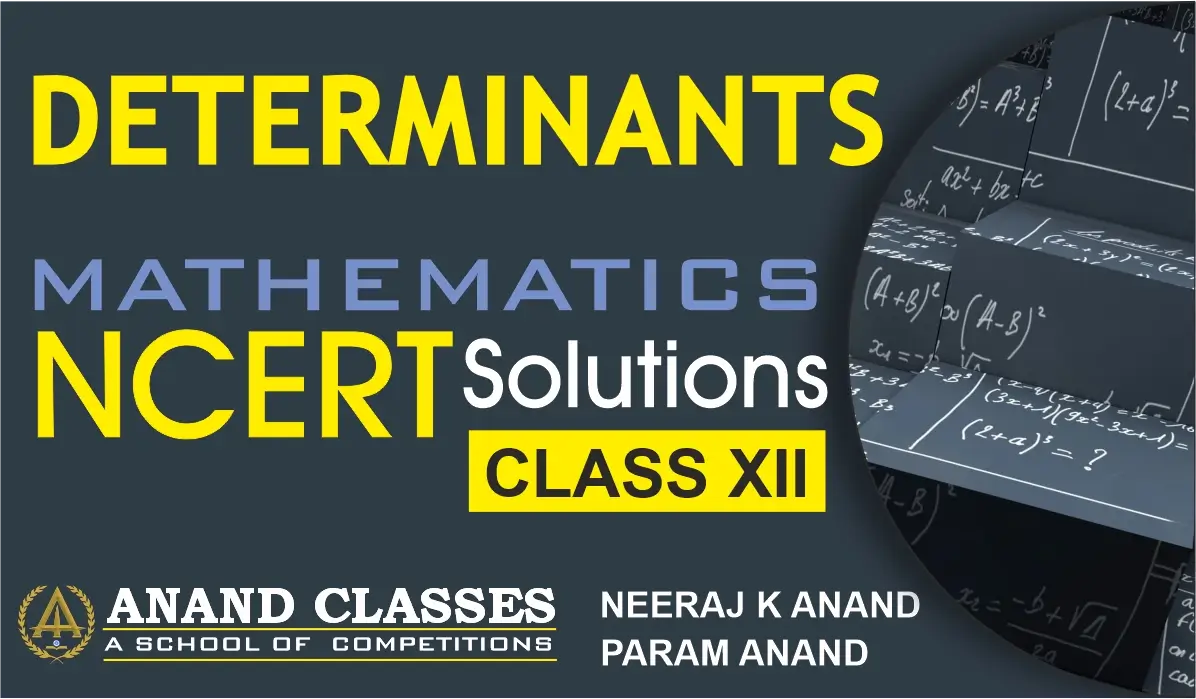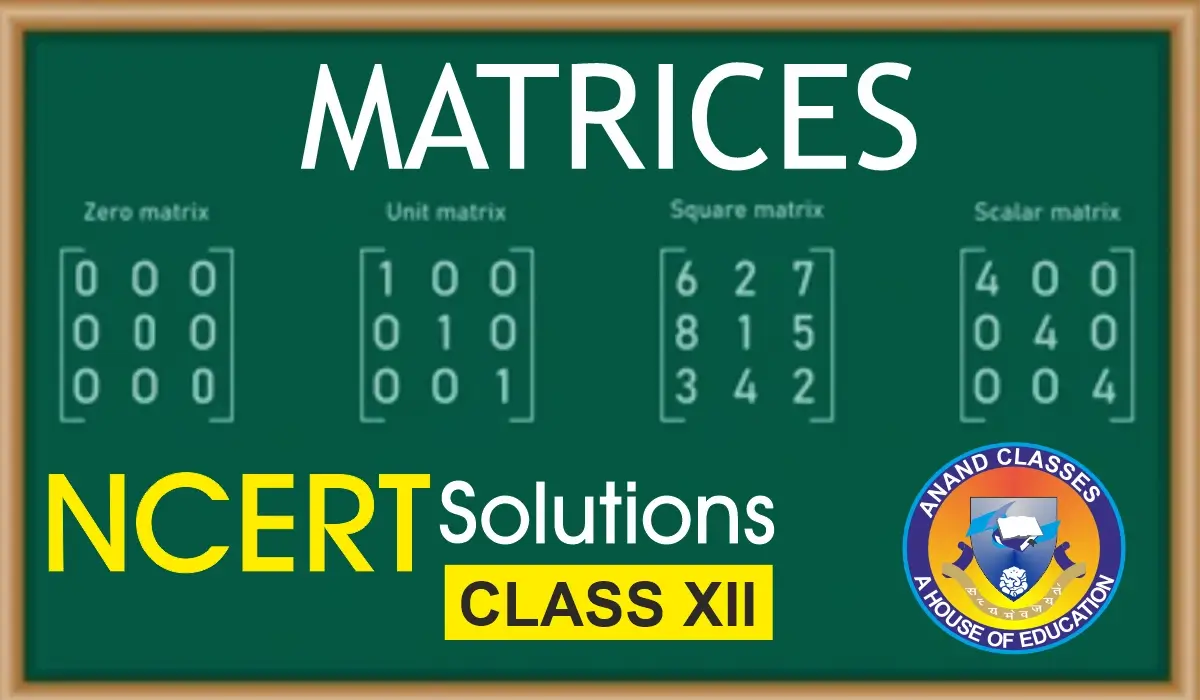Anand Classes provides complete NCERT solutions for Class 11 Chemistry, covering exercises 3.11, 3.12, 3.13, 3.14, and 3.15 on the topic Classification of Elements and Periodicity in Properties. This post explains concepts such as ionic radii, ionization enthalpy, electron gain enthalpy, and calculations related to the hydrogen atom in a simple, step-by-step manner. Each solution is designed to help students understand the fundamentals of atomic structure, periodic trends, and chemical properties effectively. Click the print button to download study material and notes.
NCERT Solutions Classification of Elements and Periodicity in Properties Chemistry Class 11 pdf Download
NCERT 3.11 : What do you understand by isoelectronic species? Name the species that will be isoelectronic with each of the following atoms or ions: (i) $F^-$ (ii) Ar (iii) $Mg^{2+}$ (iv) $Rb^+$
Answer:
Ions of different elements which have the same number of electrons but different magnitude of the nuclear charge are called isoelectronic species.
(i) $F^-$
$F^-$ has $10$ electrons ($9 + 1$). Therefore, the species
- Nitride ion, $N^{3-}$ ($7 + 3$)
- Oxide ion, $O^{2-}$ ($8 + 2$)
- Neon, $Ne$ ($10 + 0$)
- Sodium ion, $Na^+$ ($11 – 1$)
- Magnesium ion, $Mg^{2+}$ ($12 – 2$)
- Aluminium ion, $Al^{3+}$ ($13 – 3$)
each contains $10$ electrons and are isoelectronic with $F^-$.
(ii) Ar
$Ar$ has $18$ electrons. Therefore, the species
- Phosphide ion, $P^{3-}$ ($15 + 3$)
- Sulphide ion, $S^{2-}$ ($16 + 2$)
- Chloride ion, $Cl^-$ ($17 + 1$)
- Potassium ion, $K^+$ ($19 – 1$)
- Calcium ion, $Ca^{2+}$ ($20 – 2$)
each contains $18$ electrons and are isoelectronic with $Ar$.
(iii) $Mg^{2+}$
$Mg^{2+}$ has $10$ electrons ($12 – 2$). Therefore, the species
$N^{3-}$, $O^{2-}$, $F^-$, $Ne$, $Na^+$, $Al^{3+}$
each contains $10$ electrons and are isoelectronic with $Mg^{2+}$.
(iv) $Rb^+$
$Rb^+$ has $36$ electrons ($37 – 1$). Therefore, the species
- Bromide ion, $Br^-$ ($35 + 1$)
- Krypton, $Kr$ ($36 + 0$)
- Strontium ion, $Sr^{2+}$ ($38 – 2$)
each contains $36$ electrons and are isoelectronic with $Rb^+$.
NCERT 3.12 : Consider the following species: $N^{3-}$, $O^{2-}$, $F^-$, $Na^+$, $Mg^{2+}$, and $Al^{3+}$. (i) What is common in them? (ii) Arrange them in the order of increasing ionic radii
Answer :
(i)
Each one of these ions ($N^{3-}$, $O^{2-}$, $F^-$, $Na^+$, $Mg^{2+}$, and $Al^{3+}$) contains 10 electrons and hence all are isoelectronic ions.
(ii)
The ionic radii of isoelectronic ions decrease with the increase in the magnitude of the nuclear charge.
For example, consider the isoelectronic ions:
$$
N^{3-},\ O^{2-},\ F^-,\ Na^+,\ Mg^{2+},\ Al^{3+}
$$
All these ions have 10 electrons, but their nuclear charges increase in the order:
$$
N^{3-} (+7),\ O^{2-} (+8),\ F^- (+9),\ Na^+ (+11),\ Mg^{2+} (+12),\ Al^{3+} (+13)
$$
Therefore, their ionic radii decrease in the order:
$$
N^{3-} > O^{2-} > F^- > Na^+ > Mg^{2+} > Al^{3+}
$$
NCERT 3.13 : Explain why cations are smaller and anions are larger in radii than their parent atoms ?
Answer :
The size of an ion depends on the balance between the number of electrons and the positive charge of the nucleus (nuclear charge).
Cations (positively charged ions)
When an atom loses one or more electrons, it forms a cation.
- The loss of electrons reduces electron-electron repulsion in the atom.
- The number of protons in the nucleus remains the same, but there are now fewer electrons to balance the positive charge.
- As a result, the effective nuclear charge experienced by each electron increases.
- The electrons are pulled closer to the nucleus, so the ionic radius becomes smaller than that of the parent atom.
Example: $Na \to Na^+$
- Sodium loses one electron: $11$ protons, $10$ electrons.
- Increased nuclear pull causes the radius to decrease.
Anions (negatively charged ions)
When an atom gains one or more electrons, it forms an anion.
- The addition of electrons increases electron-electron repulsion in the atom.
- The number of protons in the nucleus remains the same, but there are now more electrons to attract.
- The effective nuclear charge per electron decreases.
- The electrons spread out more, so the ionic radius becomes larger than that of the parent atom.
Example: $Cl \to Cl^-$
- Chlorine gains one electron: $17$ protons, $18$ electrons.
- Reduced nuclear pull and increased repulsion cause the radius to increase.
Summary:
- Cations: smaller than parent atoms due to loss of electrons and stronger nuclear pull.
- Anions: larger than parent atoms due to gain of electrons and weaker nuclear pull.
NCERT 3.14 : What is the significance of the terms ‘isolated gaseous atom’ and ‘ground state’ while defining the ionization enthalpy and electron gain enthalpy?
Answer :
(i) Ionization Enthalpy
Ionization enthalpy is the minimum amount of energy required to remove the most loosely bound electron from an isolated gaseous atom so as to convert it into a gaseous cation.
- The force with which an electron is attracted by the nucleus of an atom is significantly affected by the presence of other atoms within its molecule or in the neighborhood.
- For the purpose of determining ionization enthalpy, it is essential that these inter-atomic forces should be minimum.
- In the gaseous state, atoms are widely separated, so inter-atomic forces are minimal.
- Additionally, since it is not possible to isolate a single atom completely, the measurement is carried out at a low pressure, further reducing inter-atomic interactions.
Hence, the term “isolated gaseous atom” is included in the definition of ionization enthalpy.
(ii) Electron Gain Enthalpy
Electron gain enthalpy is the energy released when an isolated gaseous atom in the ground state accepts an extra electron to form a gaseous negative ion.
- The term isolated gaseous atom has already been explained above.
- The term ground state means that the atom must be present in its most stable state.
- If the atom is in an excited state, less energy will be released when it accepts an electron to form a gaseous anion.
- Therefore, for comparison purposes, the electron gain enthalpies of gaseous atoms must be determined in their respective most stable state, i.e., the ground state.
NCERT 3.15 : Energy of an electron in the ground state of the hydrogen atom is $-2.18 \times 10^{-18}$ J. Calculate the ionization enthalpy of atomic hydrogen in terms of J mol$^{-1}$.
Answer :
- Energy required to remove one electron:
The energy required to remove an electron from a hydrogen atom in the ground state is the negative of its ground state energy:
$$
E_{\text{electron}} = – (\text{energy in ground state}) = -(-2.18 \times 10^{-18}\ \text{J}) = 2.18 \times 10^{-18}\ \text{J}
$$
- Energy per mole of hydrogen atoms:
Use Avogadro’s number $N_A = 6.022 \times 10^{23}\ \text{mol}^{-1}$ to convert energy for one atom to energy per mole:
$$
E_{\text{mole}} = E_{\text{electron}} \times N_A
= (2.18 \times 10^{-18}) \times (6.022 \times 10^{23})
$$
- Performing the multiplication:
$$
2.18 \times 6.022 \approx 13.13
$$
Combine the powers of 10:
$$
10^{-18} \times 10^{23} = 10^{5}
$$
So:
$$
E_{\text{mole}} \approx 13.13 \times 10^{5}\ \text{J mol}^{-1} = 1.313 \times 10^{6}\ \text{J mol}^{-1}
$$
- Convert to kJ mol$^{-1}$:
$$
E_{\text{mole}} = 1.313 \times 10^{6}\ \text{J mol}^{-1} = 1313\ \text{kJ mol}^{-1}
$$
Answer: The ionization enthalpy of atomic hydrogen is approximately $1313\ \text{kJ mol}^{-1}$.
📚 Buy Study Material & Join Our Coaching
For premium study materials specially designed for JEE, NEET, NDA, and CBSE/ICSE Classes, visit our official study material portal:
👉 https://publishers.anandclasses.co.in/
For NDA Study Material, Click Here
For SSC Study Material, Click Here
To enroll in our offline or online coaching programs, visit our coaching center website:
👉 https://anandclasses.co.in/
📞 Call us directly at: +91-94631-38669
💬 WhatsApp Us Instantly
Need quick assistance or want to inquire about classes and materials?
📲 Click below to chat instantly on WhatsApp:
👉 Chat on WhatsApp
🎥 Watch Video Lectures
Get access to high-quality video lessons, concept explainers, and revision tips by subscribing to our official YouTube channel:
👉 Neeraj Anand Classes – YouTube Channel
For NDA Polity Notes, Click :
Click here for SSC Real Numbers Notes.


